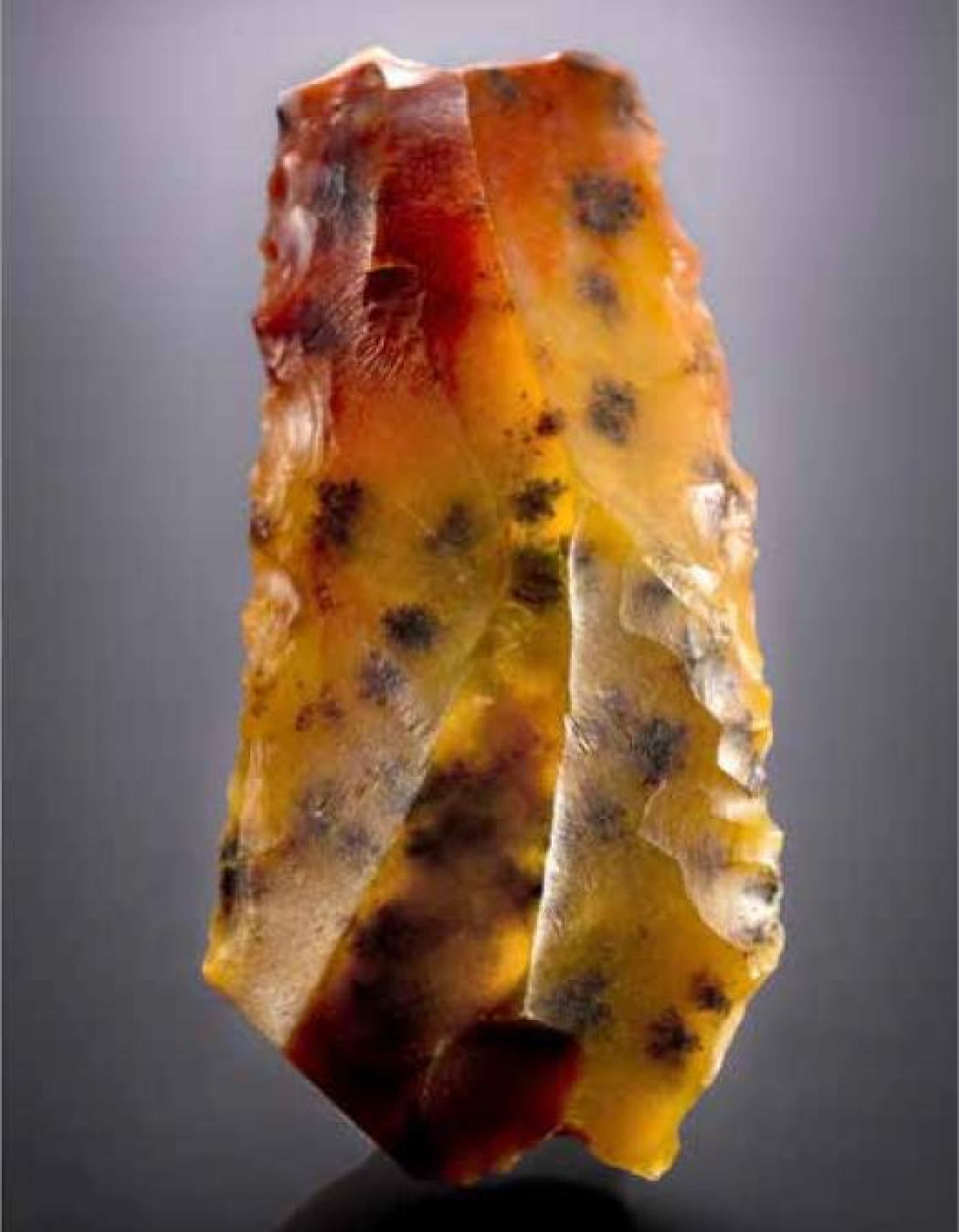
Insights from Australia's first scientists set in stone
Visitors can marvel at a dazzling display of ancient Aboriginal stone tools and learn how Indigenous scientific knowledge spanned the millennia at a University of Sydney talk this week.

An unidentified stone tool from Santa Teresa, Northern Territory. Image: Carlo Bento.
A rare collection of artefacts including axes, blades and grindstones, some dating back thousands of years, will be featured at the Sydney Science Festival talk, ‘No stone unturned: Aboriginal Scientific Knowledge’ on Friday 21 August.
Matt Poll, Assistant Curator of Indigenous Heritage at the University of Sydney’s Macleay Museum, will explain the scientific foundations of these objects and the wealth of knowledge they reveal about climate change, food technology and building materials amongst Australia’s first scientists.
“We’re trying to really challenge the idea that these tools were just about picking up a rock and bluntly banging it,” said Poll.
“There was actually a whole school of thought attached to the science of using different stone technologies, and how they were used to sustain a culture over many tens of thousands of years. It’s really a beautiful story.
Essentially, these stone tools were no different to what we use on our building sites, camping grounds, kitchens and scientific laboratories today.
Stone tools across the ages
The evolution of particular kinds of stone tools mirrored the changing climate over thousands of years. As areas of central Australia shifted from wetlands to the deserts of today, Aboriginal peoples devised new methods to thrive in their environment.
“The invention and dispersion of the tula – a small multi-purpose cutting tool – is a prime example of the innovations pioneered by Aboriginal peoples as a result of increased drought conditions,” said Poll.
Ancient climate knowledge
Even subtle indicators like the reflection of the sun on certain geographic features were used as tell-tale signs of seasonal patterns, with Indigenous Australians interpreting their environment for resource scarcity.
“Aboriginal peoples matched up their stone arrangements with the alignment of the stars, using these as a signal to move to different areas or to know whether there was an abundance of certain kinds of food or plants in the region,” said Poll.
“There’s very useful information embodied in these tools that really resonates with much of our current ecological thinking around sustainability and the use of resources in specific climates.”
Poll’s talk marks the official launch event of the Macleay Museum’s newest exhibition, Written in Stone, which opens today and runs until 1 August 2016. The exhibition celebrates the pivotal importance of stone to Aboriginal culture and identity, as a long-preserved marker of oral tradition.
“The ingenuity of this scientific knowledge, passed down through generations of Aboriginal people’s oral histories, continues to resonate in Aboriginal cultural life,” said Poll.
The inaugural Sydney Science Festival runs from 13 to 23 August, as part of National Science Week.
Event details
What: No stone unturned: Aboriginal Scientific Knowledge
When: Friday 21 August, 5.30pm to 6.30pm
Where: Old Geology Lecture Theatre, Level 1, Edgeworth David Building, University of Sydney
Cost: Free
Register: Here
Related articles
Discover the future at Innovation Week
For a week this October, we’ll be bringing together some of our brightest minds with industry and community partners to collaborate on how research and innovation can help us overcome some of the greatest health challenges facing our planet.

Long distance links inspire innovation
Working with Professor Yasuyuki Todo (Waseda University) and Dr Hiroyasu Inoue (Hyogo University), Dr Petr Matous from the University of Sydney’s Faculty of Engineering and IT found that supply chains can work as important channels for the flow of information, innovation, and productivity between individual firms.
University of Sydney joins Sydney Science Festival
Our researchers are involved in a range of public events to celebrate National Science Week from 11 to 21 August.
Social brain refreshed
While we connect with hundreds – even thousands – of others via social media, our brain’s ability to build and maintain long-term stable relationships remains as limited as that of our hunter-gatherer ancestors.
Study explains elastin's remarkable movements
New research likens the flexibility of elastin in a blood vessel to the dynamics of a ballet.
